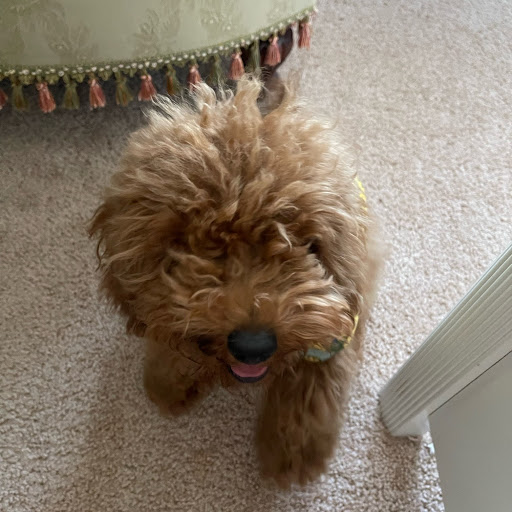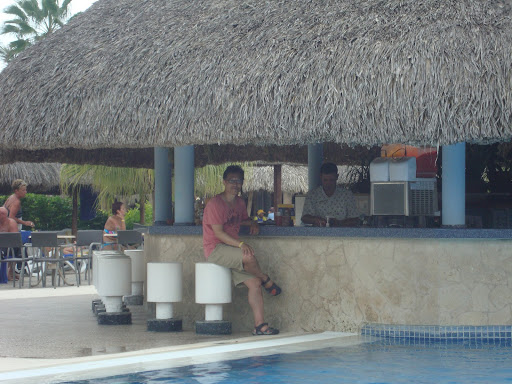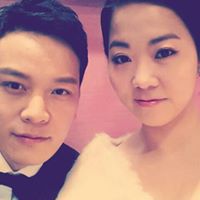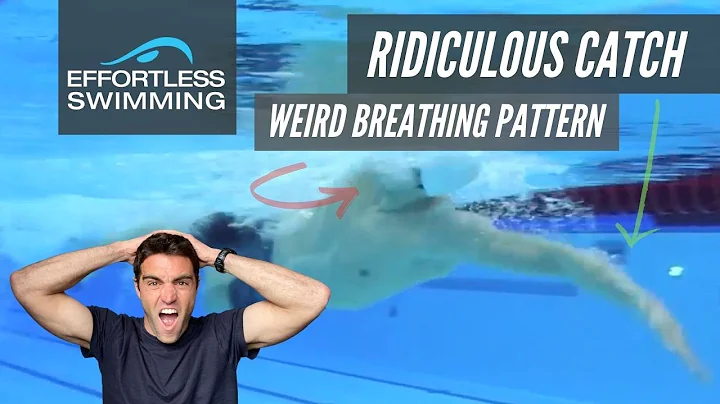Sung Keun Yang
age ~76
from Mahwah, NJ
- Also known as:
-
- Sung K Yang
- Sung Kuen Yang
- Sung Hannes
- Phone and address:
- 1045 Ash Dr, Mahwah, NJ 07430
Sung Yang Phones & Addresses
- 1045 Ash Dr, Mahwah, NJ 07430
- Fort Lee, NJ
- Teaneck, NJ
- Airmont, NY
Resumes

Sap Mm / Master Data Consultant At Caridianbct
view sourceLocation:
Greater New York City Area
Industry:
Management Consulting

Sung Yang
view source
Chief Executive Officer
view sourceWork:
Chung Koong Enterprize
Chief Executive Officer
Chief Executive Officer

Sung Kwang Yang
view source
Director Of Operation
view sourceWork:
Director of Operation

Sung Yang
view sourceLocation:
United States

Student At State University Of New York At Binghamton
view sourceLocation:
Greater New York City Area
Industry:
Insurance
Name / Title
Company / Classification
Phones & Addresses
Owner
Lee's Deli & Grocery
Eating Place
Eating Place
214 E 188 St, Bronx, NY 10458
7182953158
7182953158
Owner
N Y Garb Fashions Office
Ret Misc Apparel/Accessories
Ret Misc Apparel/Accessories
324 E 9 St, New York, NY 10003
Owner
Sung Yang Aee
Nail Salon
Nail Salon
13643 37 Ave, Flushing, NY 11354
Executive
Friendly's Ice Cream Shop
Eating Place · Ret Misc Merchandise
Eating Place · Ret Misc Merchandise
13525 40 Rd, Flushing, NY 11354
President, Chief Executive Officer
Y2S TRADING INC
Whol Fruits/Vegetables
Whol Fruits/Vegetables
31-09 Starr Ave, Long Island City, NY 11101
3109 Starr Ave, Long Island City, NY 11101
7183928300
3109 Starr Ave, Long Island City, NY 11101
7183928300
Pastor
The New Church of Greater New York
Religious Organization
Religious Organization
1 Willow St, East Hills, NY 11577
5164848004, 5164845888
5164848004, 5164845888
Owner
FRIENDLY CLEAN LAUNDROMAT, INC
Coin Operated Laundry
Coin Operated Laundry
59 02 Main St, Flushing, NY 11355
59-02 Main St, Flushing, NY 11355
5902 Main St, Flushing, NY 11355
7187621563
59-02 Main St, Flushing, NY 11355
5902 Main St, Flushing, NY 11355
7187621563
YK CORE CORP
72-11 Roosevelt Ave, Jackson Heights, NY 11372
102-30 Queens Blvd #1D, Forest Hills, NY 11375
102-30 Queens Blvd #1D, Forest Hills, NY 11375
Us Patents
-
Hydrogels And Methods For Their Production
view source -
US Patent:6559223, May 6, 2003
-
Filed:Feb 22, 2001
-
Appl. No.:09/790739
-
Inventors:Mark M. Green - New York NY
Sung Yun Yang - Cambridge MA -
Assignee:Polytechnic University - Brooklyn NY
-
International Classification:B01J 1300
-
US Classification:524831, 516 99, 522 9, 522 33, 522175, 522183, 522904, 522905, 524916, 5253294, 525936
-
Abstract:Forming graft copolymers in water using labeling of water soluble polymers with photoinitiators. Water soluble polymers can form environmentally responsive hydrophobically stimulated cages. The cages, which contain initiating radicals after irradiation, may be âopenedâ or âclosedâ by changes in environmental conditions. When the cage is closed, the radicals are trapped inside and thus do not cause substantial polymerization of water soluble monomers in the same solution. When the cage is closed, the radicals escape and cause polymerization. In another variation, hydrogels and graft copolymers are formed by covalently linking phototoinitiator groups to water soluble polymers that do not form cages. Thus, monomers may form grafts to the polymer, allowing formation of physical hydrogels. The physical hydrogels formed in either case show properties responsive to pH, salt and/or solvent composition, so that the hydrogels may be rendered to a powder by addition of non-solvents and these powders can reform the gels.
-
Controlling Photoinitiation Of Polymerization, Leading To Graft Copolymers In Water, And Compositions Of Matter For Providing Such Control
view source -
US Patent:20020161107, Oct 31, 2002
-
Filed:Feb 22, 2001
-
Appl. No.:09/790740
-
Inventors:Mark Green - New York NY, US
Sung Yang - Cambridge MA, US -
Assignee:Polytechnic University
-
International Classification:C08K003/00
-
US Classification:524/802000, 522/003000
-
Abstract:Forming graft copolymers in water using labeling of water soluble polymers with photoinitiators. The water soluble polymers can form environmentally responsive hydrophobically stimulated cages, which respond to pH, salt concentration, and/or the addition of water miscible solvents to the aqueous solutions. When the cage is “closed,” irradiation leads to radicals that cannot escape from the cage and therefore don't cause substantial polymerization of water soluble monomers in the same solution. When the cage is open via change of pH, salt concentration and/or solvent composition, the photochemically produced free radicals become exposed and cause polymerization. Under certain conditions, only graft copolymers will be formed. These graft copolymers can form a physical hydrogel in which the crosslinks are reversible. Consequently, the gel and sol states are likewise reversible. These hydrogels and graft copolymers may also be formed by a variation of the invention in which the photoinitiator groups are covalently linked to water soluble polymers that do not form cages. In this case, water soluble monomers capable of free radical polymerization in the aqueous solution form grafts to the water soluble polymer allowing formation of physical hydrogels. The physical hydrogels formed in either case show properties responsive to pH, salt and/or solvent composition, so that the hydrogels may be rendered to a powder by addition of methanol or other non-solvents and these powders can reform the gels.
Medicine Doctors

Sung K. Yang
view sourceSpecialties:
Gastroenterology, Internal Medicine
Work:
Oakland Gastroenterology Associates PC
27209 Lahser Rd STE 128, Southfield, MI 48034
2483533026 (phone), 2483531513 (fax)
Oakland Gastroenterology Associates PC
2300 Haggerty Rd STE 2010, West Bloomfield, MI 48323
2489269660 (phone), 2489269927 (fax)
Oakland Gastroenterology Associates PC
3535 W 13 Mile Rd STE 202, Royal Oak, MI 48073
2485510900 (phone), 2485510905 (fax)
27209 Lahser Rd STE 128, Southfield, MI 48034
2483533026 (phone), 2483531513 (fax)
Oakland Gastroenterology Associates PC
2300 Haggerty Rd STE 2010, West Bloomfield, MI 48323
2489269660 (phone), 2489269927 (fax)
Oakland Gastroenterology Associates PC
3535 W 13 Mile Rd STE 202, Royal Oak, MI 48073
2485510900 (phone), 2485510905 (fax)
Education:
Medical School
Loyola University Chicago Stritch School of Medicine
Graduated: 1986
Loyola University Chicago Stritch School of Medicine
Graduated: 1986
Procedures:
Colonoscopy
Endoscopic Retrograde Cholangiopancreatography (ERCP)
Esophageal Dilatation
Sigmoidoscopy
Upper Gastrointestinal Endoscopy
Endoscopic Retrograde Cholangiopancreatography (ERCP)
Esophageal Dilatation
Sigmoidoscopy
Upper Gastrointestinal Endoscopy
Conditions:
Benign Polyps of the Colon
Celiac Disease
Cholelethiasis or Cholecystitis
Chronic Pancreatitis
Diverticulosis
Celiac Disease
Cholelethiasis or Cholecystitis
Chronic Pancreatitis
Diverticulosis
Languages:
English
Description:
Dr. Yang graduated from the Loyola University Chicago Stritch School of Medicine in 1986. He works in Southfield, MI and 2 other locations and specializes in Gastroenterology and Internal Medicine. Dr. Yang is affiliated with Huron Valley-Sinai Hospital, Providence Hospital and William Beaumont Hospital.

Sung C. Yang
view sourceSpecialties:
Nephrology, Internal Medicine
Work:
Antelope Valley Neph Med GrpAntelope Valley Nephrology
1759 W Ave J STE 101, Lancaster, CA 93534
6619481388 (phone), 6619481223 (fax)
DaVita Dialysis Center Antelope
1759 W Ave J STE 102, Lancaster, CA 93534
6619426400 (phone), 6617293985 (fax)
1759 W Ave J STE 101, Lancaster, CA 93534
6619481388 (phone), 6619481223 (fax)
DaVita Dialysis Center Antelope
1759 W Ave J STE 102, Lancaster, CA 93534
6619426400 (phone), 6617293985 (fax)
Education:
Medical School
Seoul Natl Univ, Coll of Med, Chongno Ku, Seoul, So Korea
Graduated: 1982
Seoul Natl Univ, Coll of Med, Chongno Ku, Seoul, So Korea
Graduated: 1982
Procedures:
Dialysis Procedures
Conditions:
Acute Renal Failure
Chronic Renal Disease
Nephrotic Syndrome
Chronic Renal Disease
Nephrotic Syndrome
Languages:
English
Description:
Dr. Yang graduated from the Seoul Natl Univ, Coll of Med, Chongno Ku, Seoul, So Korea in 1982. He works in Lancaster, CA and 1 other location and specializes in Nephrology and Internal Medicine. Dr. Yang is affiliated with Antelope Valley Hospital and Palmdale Regional Medical Center.

Sung S. Yang
view sourceSpecialties:
Internal Medicine
Work:
Sung S Yang MD
2155 Kalakaua Ave STE 308, Honolulu, HI 96815
8083426305 (phone), 8085680167 (fax)
2155 Kalakaua Ave STE 308, Honolulu, HI 96815
8083426305 (phone), 8085680167 (fax)
Education:
Medical School
Wake Forest University School of Medicine
Graduated: 2005
Wake Forest University School of Medicine
Graduated: 2005
Conditions:
Acne
Acute Bronchitis
Acute Pharyngitis
Acute Sinusitis
Acute Upper Respiratory Tract Infections
Acute Bronchitis
Acute Pharyngitis
Acute Sinusitis
Acute Upper Respiratory Tract Infections
Languages:
English
Description:
Dr. Yang graduated from the Wake Forest University School of Medicine in 2005. He works in Honolulu, HI and specializes in Internal Medicine.

Sung Yang
view source
Sung Hoon Yang
view sourceSpecialties:
Obstetrics & Gynecology
Gynecology
Obstetrics
Gynecology
Obstetrics
Education:
Seoul National University (1971)

Sung Eun Yang
view sourceSpecialties:
Pathology

Sung S Yang
view sourceSpecialties:
General Practice
Internal Medicine
Internal Medicine
Education:
Wake Forest University (2005)
Googleplus

Sung Yang
Education:
Georgia State University
Tagline:
Chase your stupid dream

Sung Yang

Sung Yang

Sung Yang

Sung Yang

Sung Yang

Sung Yang

Sung Yang
Plaxo

yang sung
view sourceduzon
Youtube
Classmates

Sung Hoon Yang
view sourceSchools:
St. Mary's Hall High School San Antonio TX 1997-2001
Community:
Elliot Malach, Kathleen Mccown, Rafael Loera, Anita Delana

Sung Yang
view sourceSchools:
Red Cedar Elementary School East Lansing MI 1986-1990, Hannah Middle School East Lansing MI 1990-1993
Community:
Michael Fay, Tom Sparrow, John Cummins

Sung Ho Yang
view sourceSchools:
American School Asuncion Paraguay 1979-1986
Community:
Leticia Chaves, Nicolas Chase, Don Burchfield

Sung Ho Yang
view sourceSchools:
American School Asuncion Paraguay 1982-1986
Community:
Leticia Chaves, Nicolas Chase, Don Burchfield

Sung Yang
view sourceSchools:
Zion Benton Township High School Zion IL 1991-1995
Community:
Ray Mohr

Red Cedar Elementary Sch...
view sourceGraduates:
Sung Yang (1986-1990),
Afiq Ariffin Afiq (1989-1993),
David Oleson (1957-1960),
T Brookover (1958-1962),
Haniyeh Bidadi (1982-1986)
Afiq Ariffin Afiq (1989-1993),
David Oleson (1957-1960),
T Brookover (1958-1962),
Haniyeh Bidadi (1982-1986)

Washington Elementary Sch...
view sourceGraduates:
Karen Betcher (1974-1981),
Christopher Rodriguez (1986-1992),
Jamie Schimel (1971-1978),
Yoon Sung Yang (1980-1987),
Eva Papagiannis (1981-1985)
Christopher Rodriguez (1986-1992),
Jamie Schimel (1971-1978),
Yoon Sung Yang (1980-1987),
Eva Papagiannis (1981-1985)

Hannah Middle School, Eas...
view sourceGraduates:
Paulina Balboa (1972-1976),
Matt Makagon (1989-1991),
Sung Yang (1990-1993),
Folashade Medahunsi (1975-1979)
Matt Makagon (1989-1991),
Sung Yang (1990-1993),
Folashade Medahunsi (1975-1979)

Yun Sung Yang
view source
Sung Chul Yang
view source
Dg Sung Yang
view source
(Jae Sung Yang)
view source
Sung Yong Yang
view source
Sung Hyun Yang
view source
Sung Hoon Yang
view source
Yang Sung Lee
view sourceFlickr
Myspace
Get Report for Sung Keun Yang from Mahwah, NJ, age ~76














